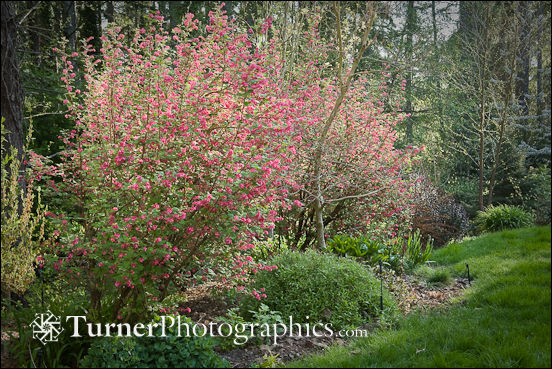Plant of the Month: Red-flowering Currant
Red-flowering Currant is one of the showiest and earliest blooming of the currants and gooseberries. The Latin name, Ribes sanguineum, also reflects the red of its blossoms. In the warmest and sunniest locations red-flowering currant starts blooming in March most years. The flowers last about three weeks.

This is a great native shrub for gardens west of the Cascades. The photo above shows it in Carrie West’s Bainbridge Island garden.
In its native habitat you’ll most often find it growing in full sun, often in rocky soil. It definitely wants good drainage, but will tolerate some partial shade. Give red-flowering currant plenty of room as it can grow 8-10 feet tall in good conditions. You can keep it in check by pruning to a pair of buds right after it finished blooming. Like many other flowering shrubs in the garden you should also prune out dead or older stems periodically.

Each spring the arching branches are loaded with hanging clusters of pinkish-red flowers. There are also horticultural varieties with white flowers and varying shades of red, but I’m partial to the native form. Hummingbirds and butterflies are both attracted to the nectar-filled deep tubular blossoms, which provide an important early-season food source. Sometimes I’ll hear a hummer buzzing around a currant bush before I see it darting from flower to flower.
In late summer the flowers are replaced by small blue fruits with a whitish bloom. They’re edible, but not very tasty. I’ve heard you can make jam or wine from them but I never have. I prefer to leave them to the birds, which can quickly strip a bush when the fruit is ripe.
Red-flowering currant is generally free of pests, but like many Ribes it is the alternate host for white pine blister rust. So if you have a white pine nearby you shouldn’t plant a currant.

